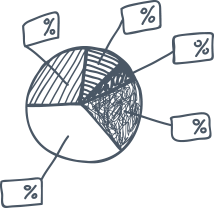
A great way to challenge assumptions, alone or (even better) with your team is with Assumption Bowling.
Step 1: Determine the top 10 assumptions you are making about your reality: your customers (e.g. their needs), your products, your ways of working, your successes to date, etc. What does everyone believe to be “eternally” valid? Every item on your list should be an unchallenged truth, taken to be “just the way things are.” These are your core assumption “pins.”

Step 2: Knock over one assumption pin at a time, and ask yourself: what if the reverse of that became true? For example, if your assumption is, “our customers value us for our dedicated and superior customer service,” you believe customer service is the name of the game in your industry, and you are best at it. Knocking down the pin means asking yourself, “what if superior customer service is no longer as highly valued as it used to be?”
The French supermarket chain Carrefour requires all of its managers to have a Conversation Surprise (try it with a French accent) with every new hire within the first six weeks of employment. With only one question at the table: “What has surprised you in your first weeks with us?”
We all become comfortable with certain ways of working, perceiving, thinking, assessing, responding, etc. And so does your organization. It’s the job of a visionary leader to challenge and help people reframe their assumptions—after all, a vision involves a new way of seeing, and that’s not easy to do through the lens of tired assumptions.
Challenging core assumptions or eternal truths can feel very uncomfortable at first, but stick with it until you get a conversation going about the validity of your existing perspectives. It could open your eyes to changes at the periphery, such what matters most to a new generation customers, which could be very different than what you currently believe and continue to tell yourself. By deliberately challenging your deep-rooted thinking, allowing yourself to imagine other possible truths, you might—earlier than others—identify important potential changes for your business or industry.